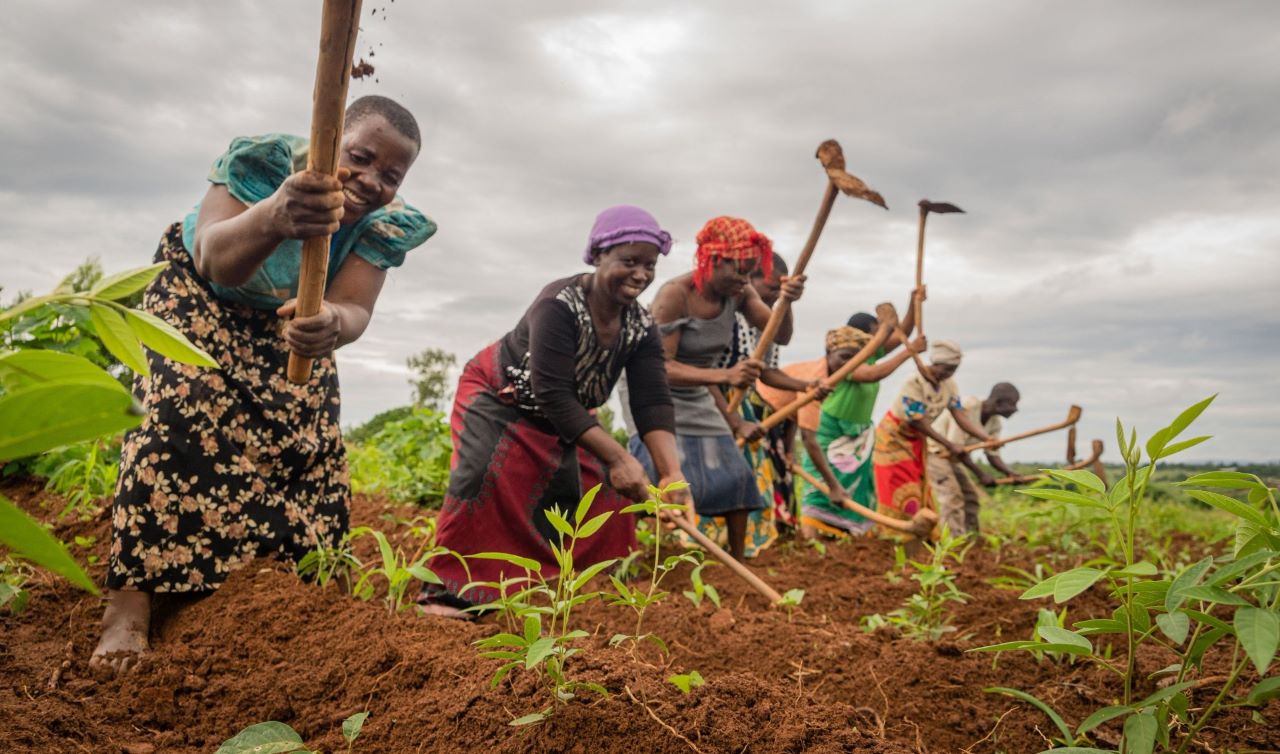Key to Tanzania's sustainable development and poverty reduction
Tanzania needs targeted interventions in sectors like agriculture, education, health, and infrastructure to reduce poverty and boost economic productivity, aligning with the African Union’s Agenda 2063 for sustainable development.
Tanzania Context:
- Size and Economy: Tanzania is the 13th largest country in Africa with the 11th largest economy and the 5th largest population. It ranks 31st in GDP per capita in PPP.
- Economic Status: Tanzania moved from low to low-middle-income status in 2020 and is projected to reach upper-middle-income status by 2054 due to a large informal sector.
Demographics and Economic Indicators:
- Population: Young median age of 18.5 years, with a rapidly growing population.
- Informal Sector: Significant, with 46% of the labor force in the informal sector, limiting productivity.
- GDP per Capita: $2,668 in 2023, 56% of the average for Africa’s low-middle-income countries. Expected to rise to $4,890 by 2043.
- Poverty: 74.1% (48.7 million) lived below the $3.65 poverty line in 2023, expected to decrease to 39.8% (40.5 million) by 2043.
Development Plans:
- Five Year Development Plan III: Aims to achieve National Development Vision 2025 goals.
Sectoral Scenarios:
- Demographics and Health:
- Entering a demographic window of opportunity from 2036.
- Agriculture:
- Contributed 26% to GDP in 2023 but struggles with low productivity. Expected to meet domestic demand in the agriculture scenario.
- Education:
- Low average years of education (6.6 in 2023), expected to rise to 8.4 years by 2043.
- Manufacturing:
- Poverty reduction to 39.7% in 2043, benefiting 837,000 more people than the Current Path.
- African Continental Free Trade Area (AfCFTA):
- GDP per capita to reach 61% of the peer group average by 2043.
- Large Infrastructure and Leapfrogging:
- Electricity access to expand to 81.5% by 2043.
- Financial Flows:
- Increase in government revenues by 1.47 percentage points of GDP by 2043.
- Governance:
- Improvements in security, capacity, and inclusion by 2043.
Combined Agenda 2063 Scenario:
- Economic Growth: GDP per capita to increase by 38% above the Current Path, reaching $6,745 by 2043.
- Poverty Reduction: 28.1% (28.6 million people) below the poverty line by 2043.
- GDP: Projected to grow to $370 billion by 2043.
- Informal Sector: Contribution to GDP to decline to 28.5% by 2043.
- Life Expectancy: Increase to 72.6 years by 2043.
- Inequality: Expected reduction by 3% compared to peer group.
- Carbon Emissions: To increase to 28.5 million tons by 2043.
- Energy Dependence: Import dependence to rise to 46% by 2043.
Tanzania needs targeted interventions in sectors such as agriculture, education, health, and infrastructure to reduce poverty and boost economic productivity for several critical reasons:
Tanzania needs targeted interventions in agriculture, education, health, and infrastructure to address specific developmental challenges, reduce poverty, and enhance economic productivity. These interventions are essential for achieving the long-term sustainable development goals outlined in the African Union’s Agenda 2063, fostering inclusive growth, and improving the quality of life for all Tanzanians.
Agriculture:
- Economic Contribution: Agriculture contributed 26% to Tanzania’s GDP in 2023.
- Food Security: Despite its potential to be a significant agricultural exporter, Tanzania struggles to meet its domestic food requirements due to low productivity in subsistence farming.
- Poverty Reduction: Improving agricultural productivity can help meet domestic food demand, reduce food insecurity, and increase income for a large portion of the population involved in farming.
Education:
- Human Capital Development: Tanzania performs poorly in terms of adult education, with the mean number of years of education at 6.6 in 2023.
- Economic Competitiveness: Improving education outcomes is critical for enhancing skills, fostering innovation, and improving labor market outcomes.
- Poverty Alleviation: Increased educational attainment leads to better job opportunities, higher incomes, and consequently, reduced poverty rates.
Health:
- Health Constraints: Poor health and malnutrition significantly constrain development, with high disease burdens affecting productivity and life expectancy.
- Demographic Window: Entering a demographic window of opportunity from 2036 requires a healthy population capable of contributing effectively to economic activities.
- Workforce Productivity: Better health outcomes enhance workforce productivity, reduce absenteeism, and improve overall economic performance.
Infrastructure:
- Basic Services: Tanzania performs poorly on various indices of basic infrastructure, such as access to unimproved water supply and electricity.
- Economic Growth: Improved infrastructure, especially in energy (electricity access expected to reach 81.5% by 2043 in the Large Infrastructure scenario), is essential for supporting industries, enhancing productivity, and attracting investments.
- Poverty Reduction: Enhanced infrastructure can improve living standards, reduce the cost of doing business, and create job opportunities.
Alignment with the African Union’s Agenda 2063:
- Sustainable Development: Agenda 2063 emphasizes inclusive growth, sustainable development, and prosperity for all Africans. Tanzania’s targeted interventions in these sectors align with the broader goals of eradicating poverty, promoting sustainable economic growth, and ensuring equitable access to resources.
- Productivity and Competitiveness: Addressing the constraints in these key sectors will boost Tanzania’s economic productivity, making it more competitive within the African continent and globally.
- Poverty Reduction: These interventions directly target the root causes of poverty, such as low agricultural productivity, poor education, inadequate health services, and lack of infrastructure, ensuring a more comprehensive and sustainable approach to poverty alleviation.
